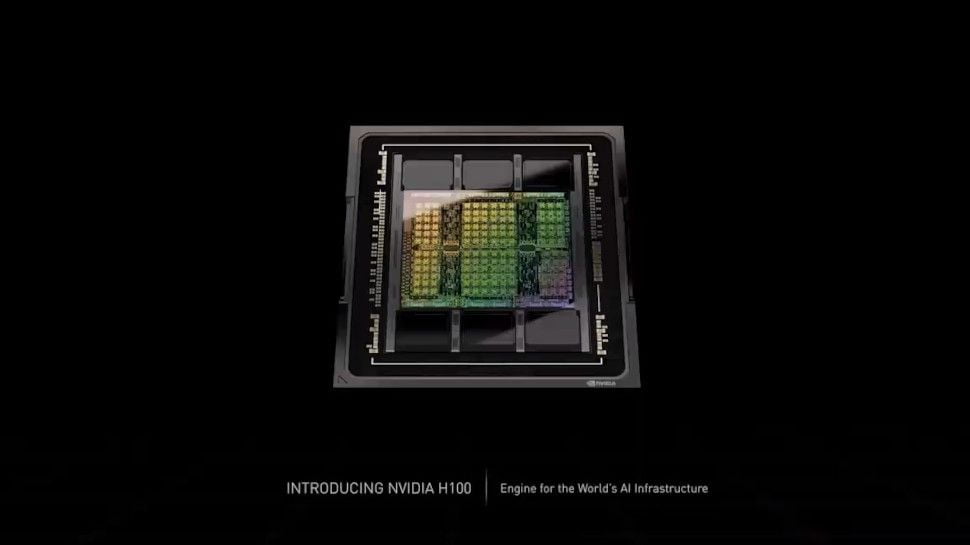As we get deeper into 2024, Nvidia Blackwell news and rumors are starting to pick up as we learn more about the architectural successor to Nvidia Lovelace.
This includes both data center and industrial-scale chips like those that are fueling the current AI boom, as well as the next-gen Nvidia RTX 5000 series. And, unlike past architecture generations, Nvidia is much more open about it as it continues to promote its AI hardware. It has been fairly tight-lipped about its plans for its GeForce line though, including its flagship Nvidia RTX 5090 and enthusiast Nvidia RTX 5080 graphics cards.
The rumor mill keeps churning though, and as we get closer to its anticipated launch late this year, we’re hearing more about what we can expect from the next generation of the best graphics cards from Nvidia, and we’ve even gotten some insight into the architectural changes that will underpin them. Here’s everything we know so far.
Nvidia Blackwell: Cut to the chase
- What is it? Nvidia’s rumored next generation of GPU architecture
- How much does it cost? Unknown at this time, but will scale from lowly budget graphics cards to data-center AI hardware.
- When can I get it? The earliest we expect to see Nvidia Blackwell would be mid-to-late 2024, with its data center Blackwell products likely rolling out before its consumer lineup.
Nvidia Blackwell: Latest news
Read more of the latest Nvidia Blackwell news…
Nvidia Blackwell: Release date
The only thing we can say right now about Nvidia Blackwell is that it appears set for release in mid-to-late 2024 for its data center and industrial Blackwell GPUs, and early 2025 for the bulk of its consumer products, at least according to Nvidia’s own roadmap. There’s a lot of talk though that the Nvidia RTX 5090 and possibly even the RTX 5080 will make an appearance before the year is out.
Nvidia Blackwell: Specs
We know next to nothing about what kind of architecture Nvidia Blackwell will present, including which process node it will use, who will fabricate the chips using the architecture, or what innovations Nvidia might roll out with it.
We do expect to see more mature ray tracing and tensor cores, and it’s almost guaranteed that Nvidia will focus on the latter rather than the former, considering it’s the tensor cores that are powering Nvidia’s current dominance of AI workloads.
We have gotten hints that Nvidia Blackwell will use, at least in part, a multi-chiplet module design, which would be a first for Nvidia. The rumor mill doesn’t specify if both commercial and consumer Blackwell GPUs will use MCMs, but it’s an exciting prospect nonetheless and means that Nvidia is catching up with AMD and Intel who have already adopted the design paradigm in their own processors.
{ window.reliablePageLoad.then(() => { var componentContainer = document.querySelector(“#slice-container-newsletterForm-articleInbodyContent-jsdSCFt2mjKdwBXsRZwLjc”); if (componentContainer) { var data = {“layout”:”inbodyContent”,”header”:”Get daily insight, inspiration and deals in your inbox”,”tagline”:”Get the hottest deals available in your inbox plus news, reviews, opinion, analysis and more from the TechRadar team.”,”formFooterText”:”By submitting your information you agree to the Terms & Conditions and Privacy Policy and are aged 16 or over.”,”successMessage”:{“body”:”Thank you for signing up. You will receive a confirmation email shortly.”},”failureMessage”:”There was a problem. Please refresh the page and try again.”,”method”:”POST”,”inputs”:[{“type”:”hidden”,”name”:”NAME”},{“type”:”email”,”name”:”MAIL”,”placeholder”:”Your Email Address”,”required”:true},{“type”:”hidden”,”name”:”NEWSLETTER_CODE”,”value”:”XTR-D”},{“type”:”hidden”,”name”:”LANG”,”value”:”EN”},{“type”:”hidden”,”name”:”SOURCE”,”value”:”60″},{“type”:”hidden”,”name”:”COUNTRY”},{“type”:”checkbox”,”name”:”CONTACT_OTHER_BRANDS”,”label”:{“text”:”Contact me with news and offers from other Future brands”}},{“type”:”checkbox”,”name”:”CONTACT_PARTNERS”,”label”:{“text”:”Receive email from us on behalf of our trusted partners or sponsors”}},{“type”:”submit”,”value”:”Sign me up”,”required”:true}],”endpoint”:”https://newsletter-subscribe.futureplc.com/v2/submission/submit”,”analytics”:[{“analyticsType”:”widgetViewed”}],”ariaLabels”:{}}; var triggerHydrate = function() { window.sliceComponents.newsletterForm.hydrate(data, componentContainer); } if (window.lazyObserveElement) { window.lazyObserveElement(componentContainer, triggerHydrate); } else { triggerHydrate(); } } }).catch(err => console.log(‘Hydration Script has failed for newsletterForm-articleInbodyContent-jsdSCFt2mjKdwBXsRZwLjc Slice’, err)); }).catch(err => console.log(‘Externals script failed to load’, err)); ]]>
Get the hottest deals available in your inbox plus news, reviews, opinion, analysis and more from the TechRadar team.
There have been some rumors around the specific GPUs that will actually run Nvidia Blackwell architecture. The consumer GPU variants designations appear to be as follows:
- GB202: likely in the Nvidia RTX 5090 and Nvidia RTX 5090 Ti
- GB203: likely in the Nvidia RTX 5080 and Nvidia RTX 5080 Ti, though possibly in the Nvidia RTX 5070 Ti as well.
- GB205: Likely in the Nvidia RTX 5070 and RTX 5060 Ti, and possibly in the Nvidia RTX 5070 Ti
- GB206: Likely in the Nvidia RTX 5060 and possibly the Nvidia RTX 5060 Ti
- GB207: Likely reserved for the Nvidia RTX 5050 and Nvidia RTX 5050 Ti.
We’ve also seen some purported specs for an RTX 5090 from a fairly reliable leaker on the Chinese-language Chiphell forum. According to a now-deleted post, the RTX 5090 will boast some impressive spec upgrades over the RTX 4090:
Swipe to scroll horizontally
| Spec | RTX 4090 | RTX 5090 |
|---|---|---|
| Streaming Multiprocessors | 128 | 192 |
| CUDA Cores | 16,384 | 24,576 |
| Ray Tracing Cores | 128 | 192 |
| Tensor Cores | 512 | 768 |
| Boost Clock | 2.52 GHz | 2.9 GHz |
| L2 Cache | 72MB | 128MB |
| Memory Bandwidth | 1,008 GB/s | 1,532 GB/s |
If these specs pan out, this should give the RTX 5090 an absolutely massive gen-on-gen boost, with the same post that detailed the specs claiming that the RTX 5090’s performance was 1.7 times faster than the RTX 4090, which is downright gobsmacking.
Nvidia Blackwell: What to expect
Obviously, being so far out from a release, it’s hard to say what we should expect from the new architecture. The only thing that’s certain is that there will be more developments, leaks, and rumors as we get closer to the release, so be sure to stay tuned to TechRadar for all the latest on Nvidia’s next-gen graphics architecture.



